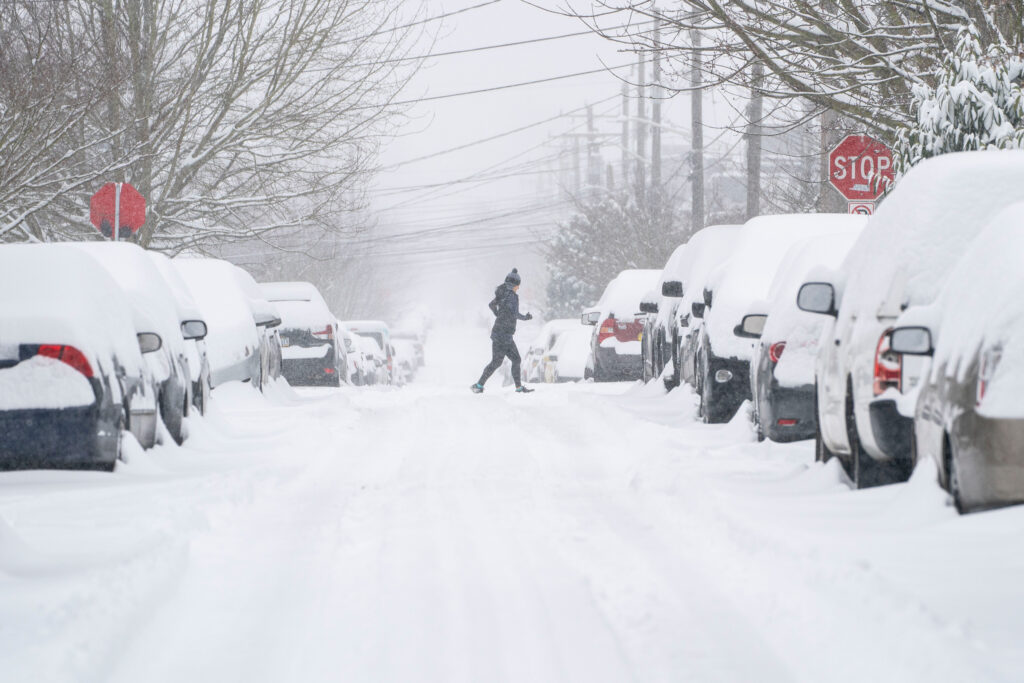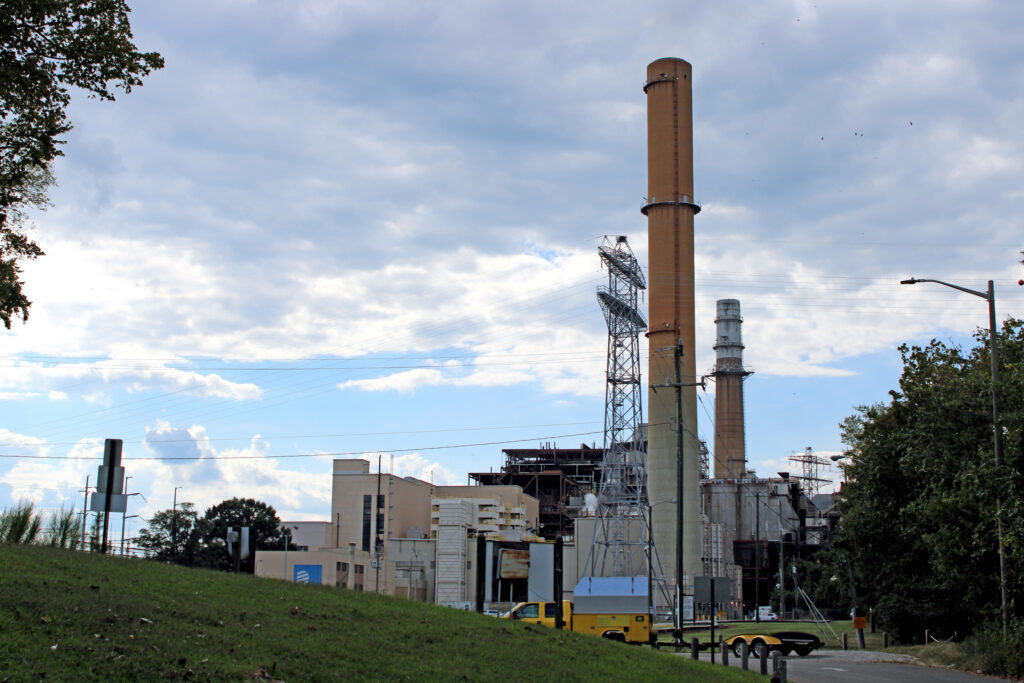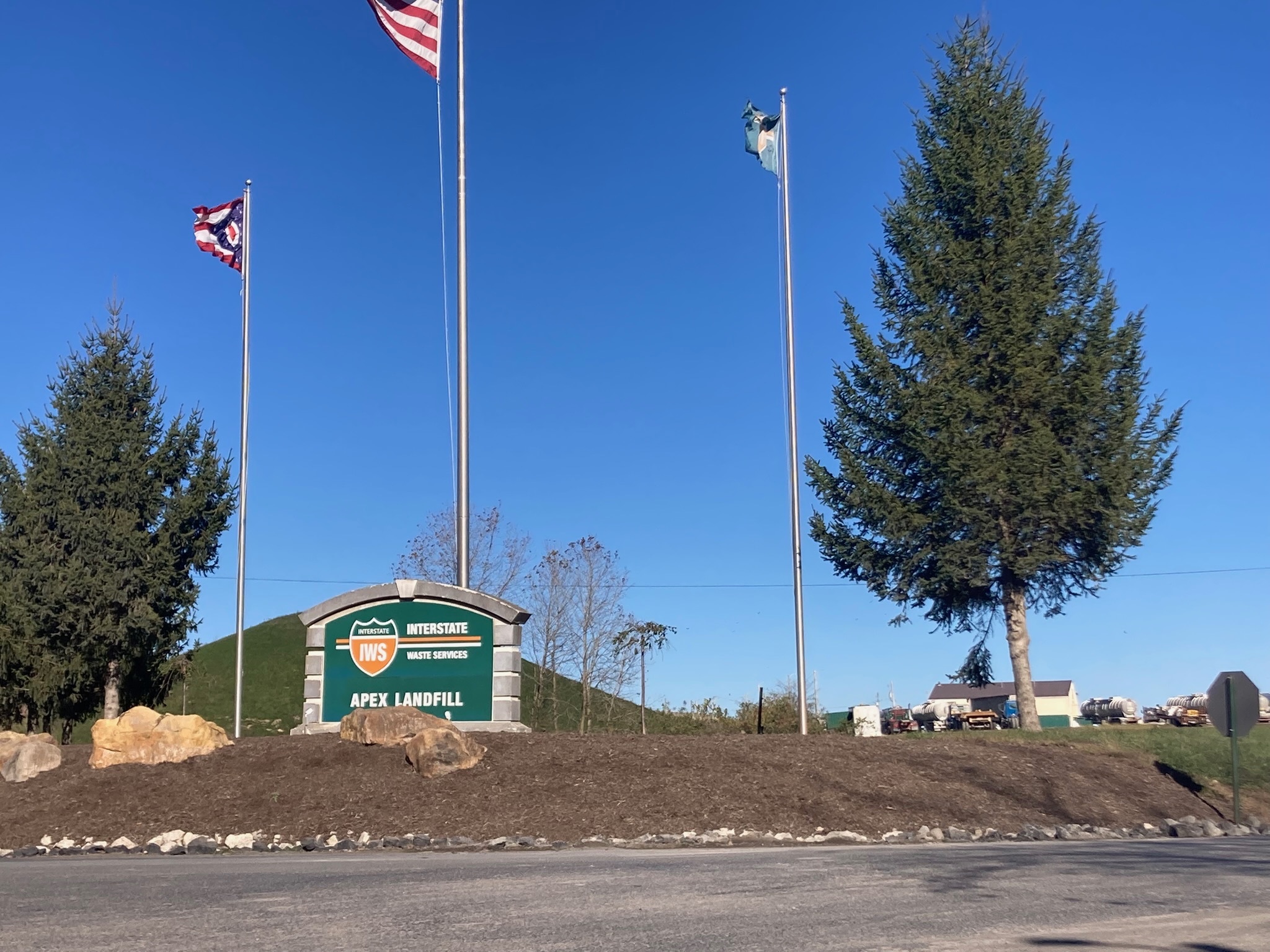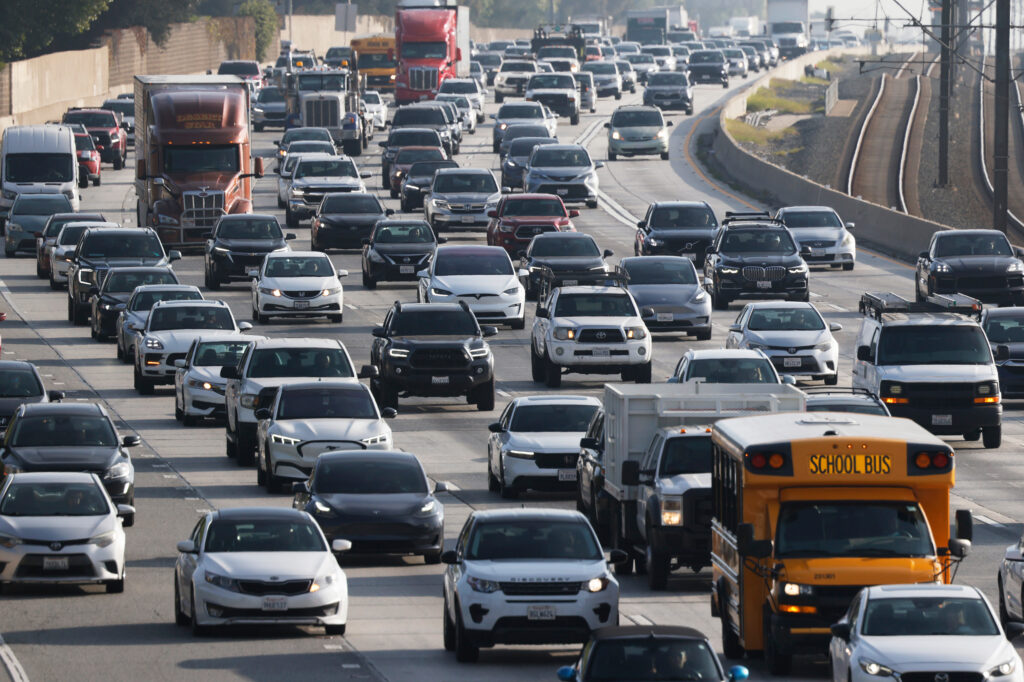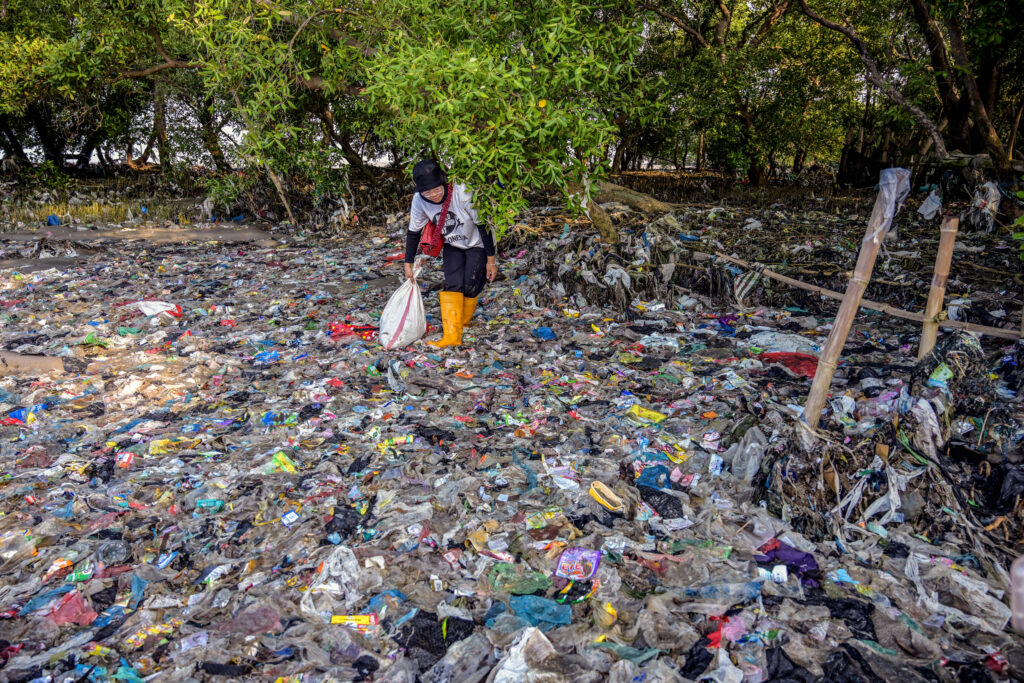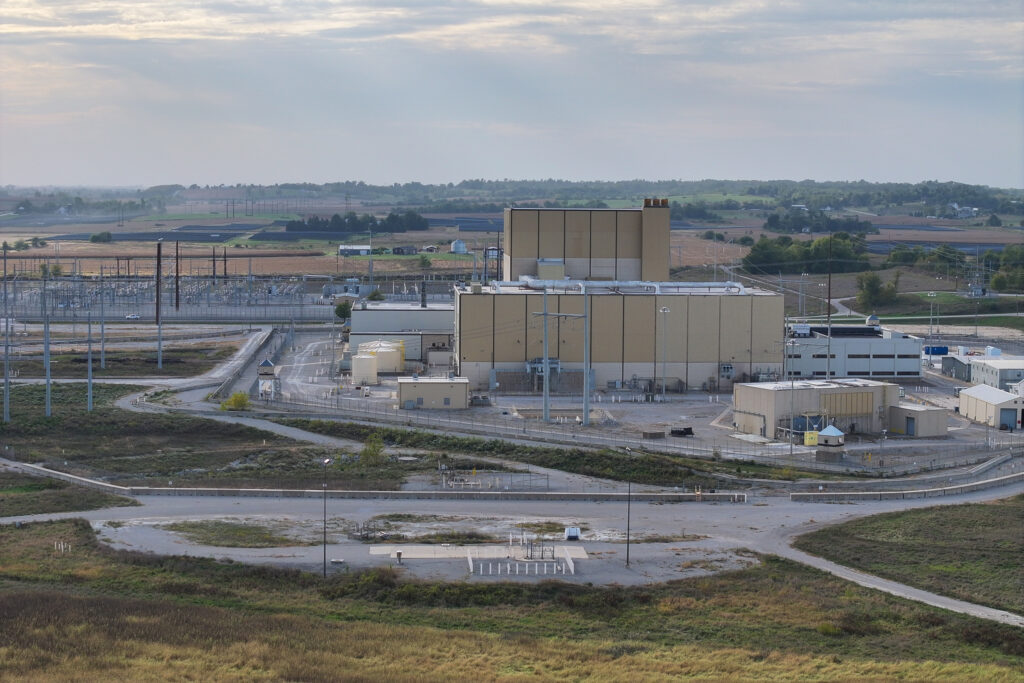Last summer, on the evening of July 11, Andy Jones went on a surreal canoe ride. Jones, the manager of the Intervale Community Farm in Burlington, Vermont, joined a flotilla of a dozen neighbors and farmers who paddled across their flooded fields.
“It was the most fun, terrible paddling trip I’ve ever been on,” he said.
Vermont had just been hit by historic, catastrophic rain storms that left the state swimming in flood damage, with water rising over 20 feet in some areas. In Jones’ part of Burlington, a fertile 100-year floodplain perfect for farming, up to 6 feet of water covered the fields.
“Where you ordinarily would look out and see crops … it was all just like a shallow standing lake,” he said.
We’re hiring!
Please take a look at the new openings in our newsroom.
See jobs
The experience was fairly tranquil, yet the scene was one of destruction. The group paddled through stands of trees and wound through greenhouses and semi-submerged equipment sheds. Some crops floated to the surface—watermelons bobbed at the waterline—while others drowned under the deluge.
“In places where it was shallow, you could look down, and there were 6 inches of murky water, and below that a very nicely organized bunch of lettuce,” Jones said.
Altogether, rebuilding and the loss of crops cost the farm $200,000; their neighbors lost $500,000. All of this, only 11 years after Tropical Storm Irene washed out much of Vermont.
“We’re all scratching our heads because we know what we don’t know, and that is: How often and severe are these floods going to be?” Jones asked. “You can turn around and replant but you have a lot of sunk costs. At what point does it become no longer economically feasible for us to do that?”
Now, a novel bill in Vermont is carving out a pathway to cover some of those costs, for farmers, businesses and taxpayers affected by the harms of climate change. The Climate Superfund Act rests on the established environmental doctrine of “polluter pays” for hazardous waste remediation under the Comprehensive Environmental Response, Compensation, and Liability Act and adapts that to climate change. It would hold fossil fuel companies accountable for cleaning up the messes they have made. The bill passed the state’s senate on a 26-3 vote on April 2, and it now heads to the state’s House of Representatives, where two-thirds of members have voiced support.
The bill is noteworthy on many fronts: It could be the first of its kind to become law in any state; it offers a marked shift from climate mitigation to adaptation; and it is rooted in a rapidly growing field of climate attribution science, one that allows scientists to confidently draw the line from carbon emitter to extreme weather events.
The act hinges upon a fund to be set up by the Vermont State Treasurer. It’s here, in calculating how much money should be paid into the fund—and by whom—that the interest and tension lie. The treasurer must then also determine, over a six-month period, how much of the money will go to whom for damages suffered as a result of climate-amplified storms, wildfires and sea level rise.
Filling the Fund
The Climate Superfund Act will hold companies involved in the business of fossil fuels accountable for their share of emissions that have contributed to the cost of climate disasters in Vermont, like the July floods Jones experienced. The bill will assess emissions between 1995 and the end of 2024.
Climate attribution science makes this assessment possible. It’s a rapidly advancing field of climate modeling that determines how likely an extreme event, such as a heat wave or flood, would have been with and without human greenhouse gas contributions. Scientists run two side-by-side models, one with a constant, pre-industrial level of greenhouse emissions and another with our actual, increasing levels of emissions.
Experts compare it to running a control study on smokers and non-smokers to determine if cigarettes are actually contributing to the development of lung cancer. Climate models like this can be precise; an analysis from World Weather Attribution determined that the heatwave that scorched the Pacific Northwest in 2021 was “virtually impossible without human-caused climate change,” for instance.
While attribution scientists can’t possibly calculate the contribution of climate change for every extreme weather event, Carly Phillips, a researcher at the Union of Concerned Scientists, said those scientists can instead refer to baseline attribution that gives them a “very broad and robust understanding of how our climate has changed” due to human greenhouse gas emissions that undergird all extreme events.
Using these trends of change, scientists can estimate what’s called the “social cost of carbon,” which attaches the cost of floods, heat and health harms to the tons of greenhouse gases that lead to such climate events.
The EPA’s social cost of carbon estimate is one way to link emissions from major polluters to a dollar amount, Justin Mankin, a Dartmouth College climate researcher, explained in his testimony before the Senate Judiciary Committee’s hearing on the bill.
Right now, the EPA places the social cost of carbon at $51 per ton. Vermont’s treasurer could multiply that amount by the emission totals of major emitters to determine how much fossil fuel companies owe the state.
A global non-profit climate think tank called InfluenceMap maintains a dataset called the Carbon Majors that tallies the emissions of the biggest players in fossil fuel and calculates social costs. The Carbon Majors 2020 dataset found that 108 fossil fuel and cement companies were responsible for 70 percent of global carbon emissions since the year 1751.
The data underscores an important aspect of the Vermont legislation: It will only include companies responsible for more than 1 billion metric tons of greenhouse gas emissions. That’s the equivalent of driving a 25 miles-per-gallon car from Earth to the sun 30,000 times, as the lead author of the Carbon Majors research, Richard Heede, explained during the Judiciary Committee’s hearing.
Such data drives home just how little an average person is contributing to the climate problem.
Though most people living in a gas-guzzling world contribute individually to climate change, “attribution research actually helps illustrate just how different our contributions are” from those of the major emitting corporations, said Jessica Wentz, a senior fellow at Columbia’s Sabin Center for Climate Change Law.
“With this new [attribution] research, it is becoming increasingly feasible to parse out different contributions and not just say, ‘these are the emissions you’ve contributed,’ but actually to be able to say, ‘this is the harm caused through those emissions,’” she added.
The American Petroleum Institute disputed this in its testimony, writing that the bill would be “forcing some people or businesses alone to bear public burdens which, in all fairness and justice, should be borne by the public as a whole.”
Yet advocates maintain that it’s a simple premise, with the science to support it: If you make a mess, you clean it up.
Where the Money Goes
The question that remains is what cleaning up after climate-induced extreme weather events will actually look like. The bill calls for the fund to go toward “adaptive infrastructure.”
That could include things like updating roads and bridges to withstand more intense, frequent floods. It could fund planting flood-resilient, absorbent riverbeds and floodplains. Some fixes could be simply moving electrical boxes out of basements and above ground level, to reduce the severity of water damage. It could mean home buyouts to move people away from severe floodplains. All of these measures are meant to protect against damages when disastrous floods inevitably hit.
But much debate has centered around an understanding of infrastructure beyond roads and bridges.“It’s not just infrastructure. It’s a broadening definition of the human systems society depends on to function,” said Anthony Iarrapino, a Vermont lawyer who has been consulting with the Conservation Law Foundation on the bill.
“The conversation is evolving past traditional infrastructure and taking an appropriately holistic look at well-being in Vermont,” he said, as long as there is a rational link between the damages and fossil fuel emissions.
This story is funded by readers like you.
Our nonprofit newsroom provides award-winning climate coverage free of charge and advertising. We rely on donations from readers like you to keep going. Please donate now to support our work.
Donate Now
That could mean directly compensating farmers for the losses they sustain after a devastating flood, explained Ben Edgerly-Walsh, who directs the climate and energy program at the Vermont Public Interest Research Group. Or it could mean covering healthcare costs caused by climate damages, as Mankin suggested in his testimony.
“One thing that it definitely isn’t about is cutting carbon pollution,” Edgerly-Walsh said. “This one really is about what are the effects of the climate crisis going to be on Vermont, how we make them less severe, less costly, and how do we pay for them when they inevitably do come?”
The Climate Superfund Act represents a marked shift away from a focus only on stopping climate change, and it acknowledges that communities need to reduce the harms that have been, and will continue to be, brought by the carbon already in the atmosphere.
“We haven’t missed the boat,” Edgerly-Walsh said, “but if it’s an armada, a lot of the ships have sailed, and we’re trying to catch as many as we can.”
As the first of its kind to gain such traction in any state legislature, the Climate Superfund offers an innovative pathway to do that and hold fossil fuel companies accountable, he and other environmentalists believe.
New York, Massachusetts and Maryland have all introduced superfund bills that have since stalled or died.
“If we can show what the art of the possible is, then other states who have a similar experience, even if in different aspects of climate change, they have a model they can work on,” said Iarrapino.
At the Intervale Community Farm, where Jones is the manager, community members have already illustrated the art of what’s possible. Following the summer’s floods, a local fundraiser quickly mobilized to help the farm cover its costs. They rebuilt a new, water-resistant shed with their neighbors, sent out the crops that they’d salvaged and stored before the flood, and then replanted new, late-summer seeds for their next harvest in this climate-addled world.




